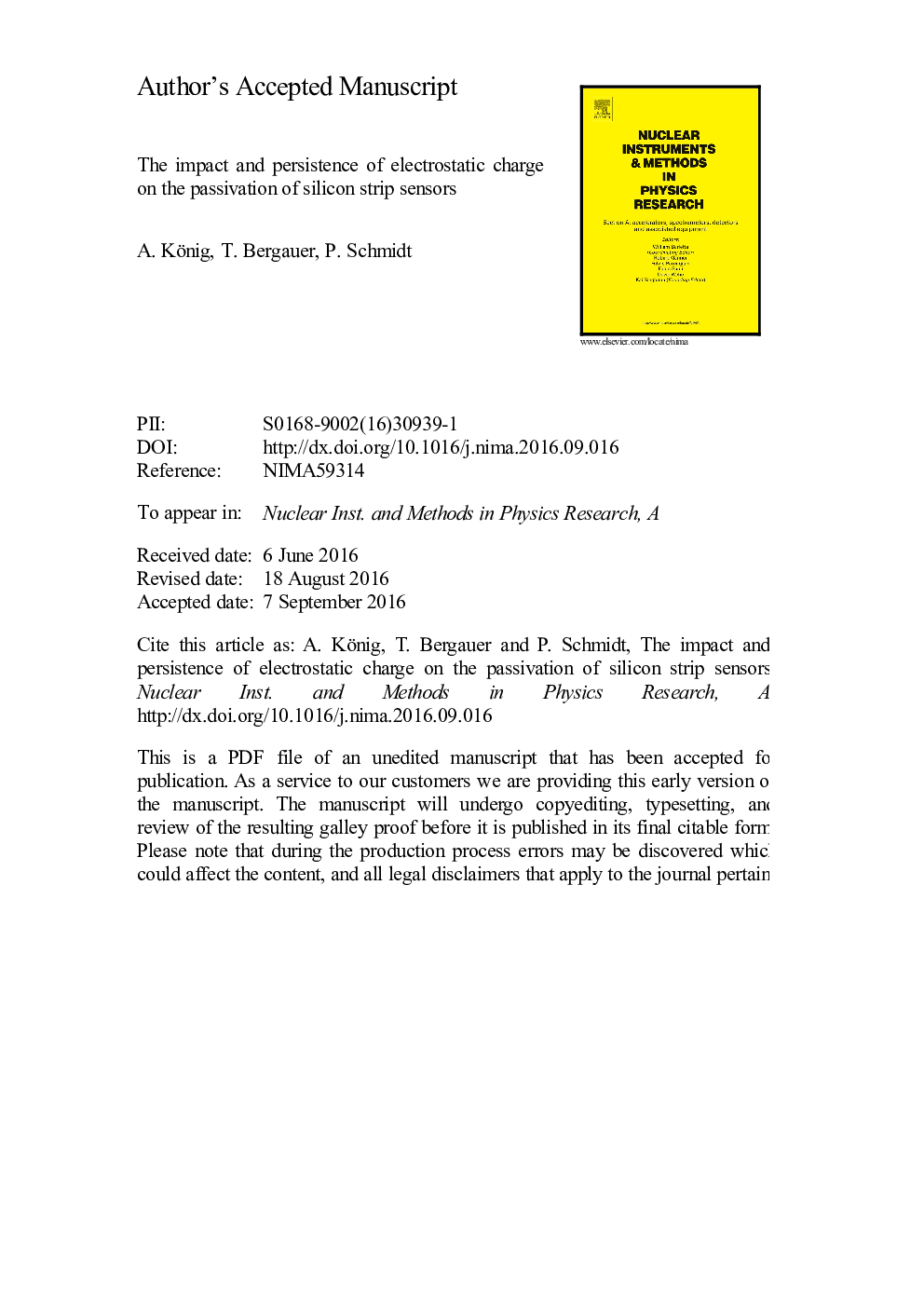| Article ID | Journal | Published Year | Pages | File Type |
|---|---|---|---|---|
| 5493267 | Nuclear Instruments and Methods in Physics Research Section A: Accelerators, Spectrometers, Detectors and Associated Equipment | 2016 | 17 Pages |
Abstract
Silicon strip sensors as used for tracking detectors in high-energy physics experiments are bare large-area silicon devices without any packaging. To protect them from environmental influences like humidity and mechanical damage, a passivation is deposited as the uppermost layer. The passivation can consist of different materials like silicon oxide, silicon nitride, polyimides or doped glasses. In this study we first demonstrate the impact of static surface charge on the sensor characteristics. This is followed by investigations on how sensitive different passivation layers of silicon strip sensors are against charge-up and how these charges retain. For such purpose, a corona charge-up device has been built and used to charge up the detectors. The surface potential distribution caused by the charge was mapped using an electrostatic voltmeter. The self-discharge of sensors with different passivation layers was investigated by long-term studies.
Keywords
Related Topics
Physical Sciences and Engineering
Physics and Astronomy
Instrumentation
Authors
A. König, T. Bergauer, P. Schmidt,
